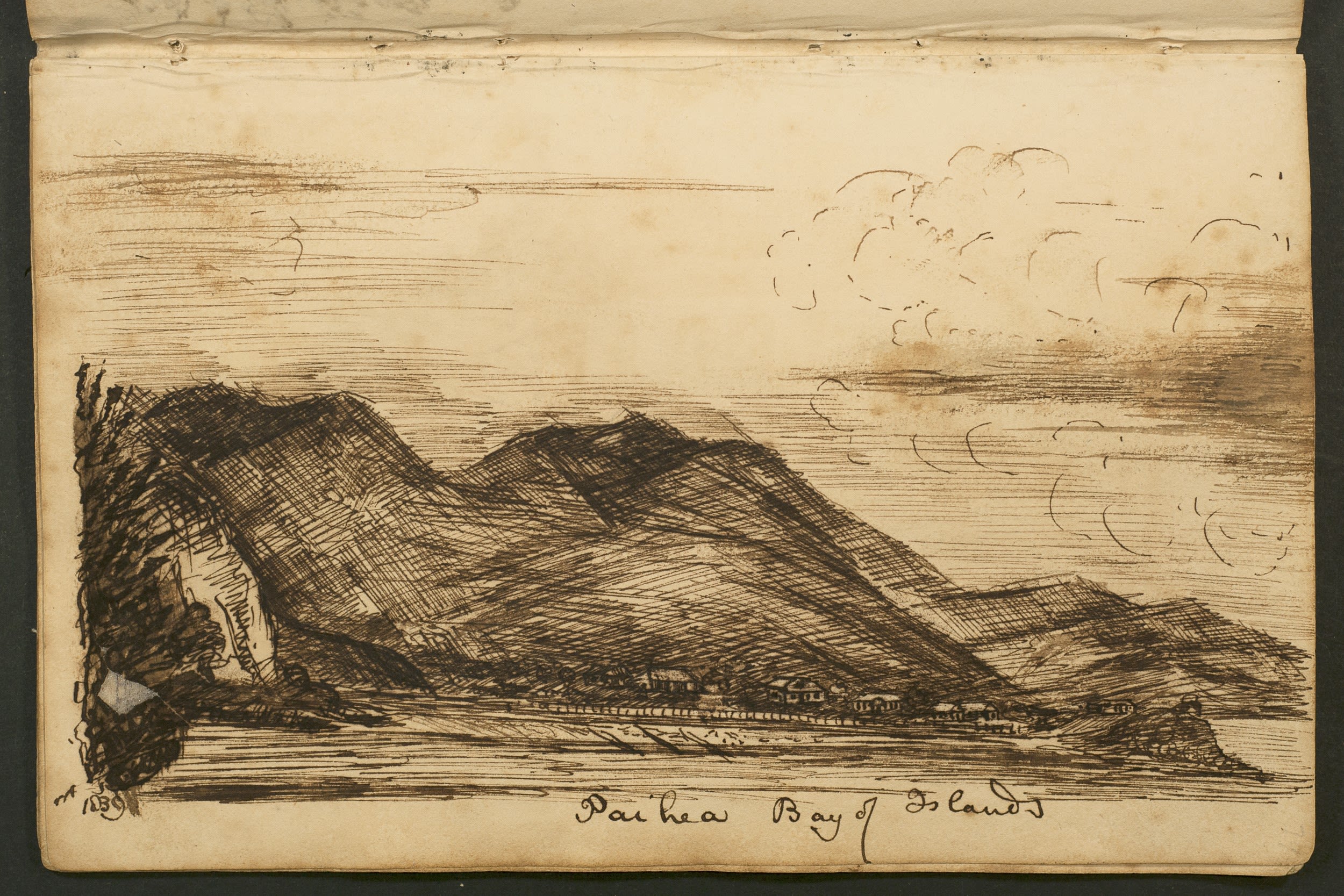Waitangi: 184 Years Later
By Niki Partsch

What do you imagine when you see these lines? The person who drew them was sitting on a riverbank, 184 years ago.
A time and place: the Bay of Islands, 1840.
How sweet the air must have been, carbon counts being close to half what they are today.
Giant Kauri stood in massive stands throughout the north; clean, fresh water fell from the skies; estuaries and oceans teemed with life.
With food plentiful and trade blossoming, expectations although cautious, must have been very good as dawn broke on the morning of 6 February.
Let's take a look...
February 6, 1840.
Drawn up in haste by lamplight overnight, Te Tiriti would be artfully debated and fiercely challenged in the light of day.
Many signed, while others did not. Women were discouraged from signing, but did so regardless.
While thoughts, feelings and motivations were somewhat sparsely recorded, what we do understand is that there was a strong desire for discussion and for a foundation of laws to protect.
The Treaty of Waitangi was not a single document. There were multiple copies written out and transported around Aotearoa and there were two distinct versions.
One version was written in English and the other in Māori. It was the Māori version that was signed at Waitangi on 6 February 1840.

In 1989, Professor Sir Hugh Kawharu translated the te reo Māori version of Te Tiriti o Waitangi. The translation aims to show how Māori would have understood the meaning of the text they signed.
Te Tiriti o Waitangi: Translation
Victoria, the Queen of England, in her concern to protect the chiefs and the subtribes of New Zealand and in her desire to preserve their chieftainship and their lands to them and to maintain peace and good order considers it just to appoint an administrator one who will negotiate with the people of New Zealand to the end that their chiefs will agree to the Queen's Government being established over all parts of this land and (adjoining) islands and also because there are many of her subjects already living on this land and others yet to come.
So the Queen desires to establish a government so that no evil will come to Māori and European living in a state of lawlessness.
So the Queen has appointed me, William Hobson, a Captain in the Royal Navy to be Governor for all parts of New Zealand (both those) shortly to be received by the Queen and (those) to be received hereafter and presents to the chiefs of the Confederation chiefs of the subtribes of New Zealand and other chiefs these laws set out here.
THE FIRST
The Chiefs of the Confederation and all the Chiefs who have not joined that Confederation give absolutely to the Queen of England forever the complete government over their land.
THE SECOND
The Queen of England agrees to protect the chiefs, the subtribes and all the people of New Zealand in the unqualified exercise of their chieftainship over their lands, villages and all their treasures. But on the other hand the Chiefs of the Confederation and all the Chiefs will sell land to the Queen at a price agreed to by the person owning it and by the person buying it (the latter being) appointed by the Queen as her purchase agent.
THE THIRD
For this agreed arrangement therefore concerning the Government of the Queen, the Queen of England will protect all the ordinary people of New Zealand and will give them the same rights and duties of citizenship as the people of England.
[Signed] W. Hobson Consul & Lieutenant Governor
So we, the Chiefs of the Confederation and of the subtribes of New Zealand meeting here at Waitangi having seen the shape of these words which we accept and agree to record our names and our marks thus.
Was done at Waitangi on the sixth of February in the year of our Lord 1840.


He mea i tāia | Printed sheet, Te Tiriti o Waitangi courtesy of Archives New Zealand
He mea i tāia | Printed sheet, Te Tiriti o Waitangi courtesy of Archives New Zealand
At the heart of Te Tiriti are three core principles; partnership, protection, and participation.
Heritage New Zealand Pouhere Taonga values are in line with the principles of The Treaty and are infused into the work we do.
Learn more about our commitment to Te Tiriti and our work to identify, protect and preserve the heritage of Aotearoa New Zealand.



